Death Valley (1933...no publisher listed);
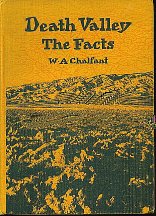
The Story of Inyo ~ 1933 ~ 430 pages ~ Th eChalfant family were
early pioneers who settled Inyo County.
The Story of Inyo presents a comprehensive view of the history
and geology of the Owens Valley, beginning with its first inhabitants,
and extending through the conflict with the City of Los Angeles. It is
written from the perspective of one of the prominent citizens of the Valley
during its formative years, newspaperman and author W.A. Chalfant. When
you pick up this book, not only do you get some very insteresting facts
about the Owens Valley, you also get to read them in a writing style that
was prevalent at the time that the history was being made.
Other
Death Valley The Facts by W. A. Chalfant ~ 1930 ~ Stanford University
Press or Oxford University Press
FOREWORD
Writers on Death Valley, the Tomesha (ground afire) of
one of the Indian tribes, have drawn heavily on the vocabulary of descriptive
terms. They tell us the Valley is bizarre, fantastic, weird, mysterious,
fascinating, wonderful, grim, forbidding, sinister, serene, even charming.
We read of its flaming sun in a blazing sky, its glaring landscapes, its
shadowy recesses, and its silent, brooding night with stars in velvet depths.
Each writer has seen there the qualities he anticipated and has found inspiration
for his most graphic adjectives. It is a paradoxical land, they say, knowing
alike the waves of shimmering heat and the balmy haze of delightful, dreamy
Indian summer. On the one hand lies salt a thousand feet deep; on
the other, during the right fortnight, flowers tinge the gray sands. Lives
have surrendered to thirst, yet it is better watered than most deserts,
wild fowl make it a way station in their migrations, and floods strip the
covering from the mountain ribs. There has been much of such description,
to the neglect of prosaic details. The matter-of-fact inquirer for
knowledge has found it, if at all, in dilute form.
This volume attempts to supply information, without emulating
the prose-poets. Facts and serious conclusions herein are worthy of credence
not because of where they are found so much as because they are based on
painstaking investigation. Documents and reports and the findings
of skilled specialists fortify gleanings from other reliable sources as
well as personal observations in trips covering the Valley practically
from end to end and from side to side. Grateful acknowledgment is made
for generous cooperation. Unlimited selection has been permitted from
the fine collections of pictures taken by Mr. Burton Frasher, of Pomona,
California, and Mr. Stephen Willard, of Palm Springs, California; and Mr.
Frasher also secured special views while with the author and others on
a Death Valley expedition. The illustrations frequently tell the story
as words cannot.
The kindness of Professor W. L. Jepson, California’s foremost
botanist, in reading and correcting the manuscript chapter on his
special study gives it an authenticity which readers cannot fail to appreciate.
Assistance by Mr. Robert Kessler, of Los Angeles, in botanical information,
is appreciated.Notes’ on the desert sheep are from information supplied
by Mr. E. H. Ober, ranking as one of the highest authorities on that subject.Publications
of the Weather Bureau, the Department of Agriculture, and the War Department
have been drawn upon freely, some of the out-of-print material being courteously
supplied from headquarters. The resources of the California State Library
and of the library of the Nevada State University have contributed items,
and many individuals have responded most kindly to various requests.
Not least among those who have helped this undertaking
is Mr. W. A. Crosby, Automobile Club of Southern California representative
in Bishop, California. His genial companionship and resourcefulness have
made pleasant the weary miles of repeated desert journeys. These chapters
unavoidably cross some of the trails followed in The Story of Inyo (Chicago,
1922). Further attention to Death Valley was not contemplated when that
book was prepared, otherwise only the historical features would have
been included in it. However, duplication of matter has been avoided so
far as may be, and the historical details in this volume are more
accurate and more complete.
W. A. CHALFANT ~ BISHOP, CALIFORNIA ~ November 30, 1929
~ CONTENTS
SOME GEOGRAPHICAL FACTS
THE ‘FORTY-NINERSMORE FACTS
CLIMATOLOGY
WATER
PLANT LIFE
ANIMAL LIFE
GEOLOGY AND MINING
BORAX
NATURE’S NOVELTIESPERILS OF THE DESERT
THE WORK OF MAN
ILLUSTRATIONS
DEATH VALLEY FROM DANTE’S VIEW . .SOUTHERN ARM OF DEATH
VALLEY FROM DANTE~S VIEW
IN THE FUNERAL RANGE
FURNACE CREEK INN
AT FURNACE CREEK RANCH
FURNACE CREEK WASH
DEATH VALLEY NEAR ZABRISKIE POINT . NORTHERN ARM LOOKINd
ACROSS SAND DUNES |
ENTRANCE TO GOLDEN CANYON
UBEHEBE CRATER STOVEPIPE WELLS HOTEL
SAND DUNES
THE DEVIL’S GOLF COURSE
BAD WATER
AT BENNETT WELLS
DESERT HOLLY
NIGGERHEAD CACTUS
WILD BURROS IN DEATH VALLEY . . HARMONY BORAX WORKS
A TYPICAL “DESERT RATRYAN, CALIFORNIA
IN GOLDEN CANYON MUSHROOM ROCK
A TWENTY-MULE-TEAM WAGON .
ENTRANCE TO BORAX MINE
GROTTO CANYON
VEGETATION ON SALT MARSH IN DEATH VALLEY STOVEPIPE WELLS
SCOTTY’S CASTLECOMMUNITY CENTER AT DEATH VALLEY JUNCTION,
CALIFORNIA |
INDEX
Abbott, emigrant, , , Alum, Amargosa Range, Amargosa
River: once reported navigable, ; old-time name, ; reached by ‘Forty-niners,
, ; mining near, , ; volcanic action near, ; granite near, Animal life:
errors concerning, , ; found by George party, ; chapter on, — Arcane, J.
B., and family: emigrants, ; leave Furnace Creek, ; at Bennett Wells, ;
escape from Death Valley, , Ashford Brothers, mining venture, Ash Meadows:
Lyle party at, ; wild grapes at, Automobile Club of Southern California,
sign-posting work,Bad Water: lowest point, ; drainage to, ; sink of Valley,
; view of, facing ; birds near, ,
Bailey, Captain Robert, Bailey, Vernon, observations on
horned toad, Ball, Sydney H.: quoted, ; review of geologic occurrences,
; comment, Bandits, , Bats, Beatty, Nevada, routes from, , Beck, Lou Westcott,
life-saving work, Bell, J. R., Bench marks, , , Bennett, Asabel, and family:
emigrants, ; leave Hunt train, ; travel independently, ; at Furnace
Creek, ; start southwesterly, ; at Bennett Wells, ; leave Death Valley,
, , ; reach San Francisquito Ranch, Bennett, Charles, borax hauling,
Bennett Wells: bench mark near, , ; camp at, ; return of Manly and Rogers
to, ; journey from, , , ; natural food near, ; French party at, ; George
party, , ; McCormack finds, ; Lieutenant -c Birnie’s camp, ; description,
, ; view of, facing ; vegetation, ; Eagle Works near, Birds, effect of
heat on, ; varieties found, , , ; trapped in borax vats, ; Indian method
of killing, Birnie, Lieutenant Rogers, Jr., , Black Mountains, , , , ,
, ; mining in, Blaisdell, Governor, expedition of, Blanch, C. C., co-locator
of borax, Bledsoe, Judge B. F., Easter speaker, Bonnie Claire, , Borax:
locators found false surveys, ; discovery began new era, ; quantity, ,
; chapter on, — Boundary Canyon: water in, ; flowers near, ; limit of ancient
lake, ; early known pass, ; gem miner, ; natural pass, Bradbury Well, Breyiogle,
Jacob: his lost mine cause of exploration, , ; met by Blaisdell patty,
; prospecting, ; story of, , , , Brier, J. W., with Jayhawkers, , Brier,
. W., Jr.: articles, ; quotations from, —, Brier, Mrs. . W.: quoted,
, , , , ; venerable age, ; heroism, Brown, Charles G., road-builder, Browne,
Colonel E. F., geologic theories, — “Buckskins,” emigrant subdivision,
“Bug Smashers,” emigrant subdivision, Burros, wild, facing Busch, Peter,
death of, Byron, Brian, emigrant,
Cactus, , , ; niggerhead, facing Cahill, W. W., Campbell,
M. R., analysis of salt marsh, Camp Independence, Wheeler-Lyle expedition
at, , Carbonate Camp, Chalfant, P. A.: with San Francisco party, ; story
of Gunsight Mine, ., Chahwalla, see Chuckwalla Chloride Cliff: mines, ;
view, ; contributor to mining excitements, Chowchilla River, Chuckwalla:
eaten by emigrants, ; appearance, Clergy, Sergeant . B., weather observations,
, , Climate, , , /chapter on, — Cloudbursts, Coker, Edward, emigrant, ,
Coleman Springs, Coleman, W. T., & Co: purchase of borax works from,
; bought Winters’ find, , ; built Harmony Borax Works, ; failed, ;
started Greenland Ranch, Coleoptera, Colton, . B., emigrant, , , , , ,
, Comstock’s Study of Insects, quoted, , Coolidge, Dane, finds emigrant
relics, Corkscrew Canyon, “Cottonball,” , Cottonwood Creek and Canyon:
men sent to, ; description, ; Lyons district, Coville, F. V.: on effect
of dry years on plant growth, ; barren areas, .; Indian diet, ; expedition,
, ; botanical catalogue, — Cow Creek, Culverwell, Captain: joins Bennett
train, ; death of, Curious Butte,
Daggett, borax headquarters, , f. Dante’s View: drainage
seen from, ; road, , ; snowstorm, , ; view, iii, , , , Darwin Wash: road,
, ; named, ; route of Lyle, Date palms, orchard at Furnace Creek Ranch,
, Daunet, Isidore, borax locator, Daylight Pass and Springs, , Dayton,
James W., caretaker at Fur- nace Creek Ranch,;deathof, f. Deaths from hardships,
— Death Valley Buttes, Death Valley Junction: road, ; structure at, , facing
Death Valley: length, width, longitude, and latitude, ; depth, , , ; “proper,”
; southern arm, —, fac- jag ; northern arm, , facing Denton, Oscar, caretaker,
, DeQuille, Dan, , Devil’s Golf Course: view of, facing ; description,
, , Donner party, fate of, altered emigrant route, Doty, Ed: “Kingbird
of the Jay- hawkers,” ; crossed Panamint Valley, ; overtaken by Manly,
Eagle Borax Works: water and vegetation near, , ,
; operation and abandonment, , , Eagles, destructive of desert sheep, Earhart,
brothers and son, emigrants, Easter service in Death Valley, Egan, guide,
disappearance of, Eichbaum, H. W.: builds toll road, , ; plans first Easter
service, Eldredge, David, lost, Electric plant, Elizabeth Lake, Manly and
Rogers at, Emigrant Pass, Emigrant Springs, Entomology, reports on, , Epsom
salts, great amounts of, Erkson, Alexander, emigrant, Eureka Valley, waterless,
Expeditions: French, ; George, , ; Owen, ; Blaisdell, , , ; Wheeler-Lyle,
—; Birnie, —
Fairbanks, R. J., , , , , , Farley, N. H., Ferguson, Bill,
Fish, emigrant, , Flowers in Death Valley, ; see Vegetation Forty-Mile
Canyon, Briers at, ‘Forty-niners, the, -, Frank, emigrant, Freeman, vicinity
of, reached by emigrants, Frémont: on old Spanish trail, ;
map, Frémont Trail, French, Dr. Darwin, and party, named Furnace
Creek, , , Funeral Mountains, , facing , , ~ - names of peaks, ; attack
on whites in, ; relics, ; crossed by emi _ grants, , ; Breyfogle’s
camp, ; evidences of volcanic action, Funston, Frederick, , Furnace Creek:
name unchanged, ; - distance from Lost Wagons, ; furnaces probably built
by Mexicans, ; emigrants at, , , , ; named by Dr. French, , ; Stretch’s
notes from, , ; Teck at, ; King sent to, ; heat, , ; source, ; salt marshes,
; - water birds, ; volcanic and geyser action, , ; borax, ; canyon, Furnace
Creek Inn, facing , , Furnace Creek Ranch, sea-level con- tour at, ; distance
from Bad Water, ; transfer, ; view, facing ; heat, ; underground water,
; birds, , ; borings near, ; named and renamed, ; palms, ; development,
, Furnace Creek Wash, , facing , ,
Galesburg, Illinois, Jayhawkers’ starting-point,
Gem stones, , — Geological Survey: depth measurements, , ; “Lost Valley,”
; lowest — bench mark, ; error perpetuated by, ; heat surmised, ; on flow
of Amargosa River, ; bulletin on water, —; quadrangles, , ; analysis of
surface, ; measurement of Ubehebe Crater, George, Dr. S. G.: and party,
, ; water signs noted, ; comment on bats, Georgians: emigrants, , ; cross
Walker’s Pass, Gillis, emigrant, Golden Canyon, , ; view of entrance,
facing Gould, emigrant, Gower Gulch, Grand View, Grapevine Canyon, , ;
site of Scotty’s Castle, Grapevine Mountains, , , , , Grapevine Springs,
, , Gregg, S. G., Greenwater, , , Greenland: weather observations, — ;
name given to ranch, Grinnell, Dr. Joseph, observations on bird life, ,
Grotto Canyon, , facing Gunsight Mine: “lost mine,” , , ; story of, ,
Hadley’s Springs, ; source of Furnace Creek, Hahn,
C. F. R., lost guide, Haines, Captain Asa: diary quoted, , ; reference,
; age at death, Hanepah Creek, ; Canyon, Hanks, H. G.: report of, —; on
heat, ; on wind, ; on water temperature, ; state mineralogist, , Harcourt,
comment in Overland Monthly, , , Harmon, Myron, co-locator of Eagle Borax
Works, , Harmony Borax Works, , , , Harris, Shorty, Hawkeyes, emigrant
train, , Helmer, emigrant driver, , , Henderson, W. T.: with George party,
; named Telescope Peak, Hinkle, Fred, disposes of robbers, Hitchens, James,
Hole in the Rock Spring, Hornaday, Dr. W. T.: specimens of sheep, ; on
kangaroo rat, , Horned toad, , Horton, Phil, Humidity, , Hungry Bill’s,
stream at, Hunt, Captain Jefferson, emigrant guide, , ,
Indians: trails of, , , ; encounters with, , , ,
, , , ; their food taken by emigrants, , ; find Pinney and Savage, , ;
village, ; feared by Manly, ; hieroglyphics, ; of Saline Valley, ; dietary,
, , , ; tribal boundaries rigid, ; hunters’ blinds, , ; sheep hunt, ; burned
wagons, Insanity of lost~nen, Insects, , , , Ischam, William, emigrant,
, , Itacolumite,
Jackson, driven from Furnace Creek, “Jayhawkers”: term
misapplied, ; organized, ; designation of, , ; oxen stolen, ; told of short
route, , ; exclude women and children, ; experiences of, ; wagons abandoned,
; separated from Georgians, ; course of, ; burning of wagons, ; left Death
Valley, , ; route not followed by Manly party, ; overtaken, ; named Providence
Springs, Jensen, Andrew, notes from, , Jepson, Professor W. L.: acknowledgment
to, vi, ; observation by, ; his Manual of Flowering Plants, , ; data, ,
, Johnson, A. M., financial backer of Scotty’s Castle,
Kangaroo rat, , Keane Wonder, , Kern River reached by
Martin party, Kessler, Robert: comment, ; list of ferns, ; additional plants,
, King, Clarence, Koehler, John, Last Chance Canyon, Last Chance Range,
,
Last Chance Spring: name unchanged, ; Lyle party at, ;
stories of naming, , ; location, Lawlessness, — Leadfield, , , Le Conte,
Professor, Lee, Leander “Cub”: cattle at Furnace Creek, ; colemanite discovered
by, Lee, half-breed, — Lida Quadrangle, Lila C. Mine, Lilley, W. B., ,
Lilliard, ., Little Salt Lake, caravan at, , Lost Valley: name not accepted
by Geological Survey, ; geological structure, Lost Wagons: name misapplied,
; correct location, , , ; naming of place now so called, ; mention of,
by Stretch, Lowest point, , ; see Mount Whitney and Sea-level, area
below Lyle, Lieutenant D. A., expedition, , , Lyons, district,
McCausland Brothers, mining venture, McChristian, , McCormack,
Dr. Hugh, McCormack’s Wells, now unknown, ; discovery, ; water at, McCormick,
version of Gunsight Mine story, , McDonald, . M., co-locator of Eagle borax
deposit, McGowan, emigrant, Manly, William Lewis: namer of Death Valley,
; missed easier route, ; outstanding landmark should be named for, ; book
by, ; notes and experiences, —, , -, , ; death of, Manly Pinnacle, Marble
Spring, Martin party, , Meiser, swamper, Menu, a special, Mesquite: a food
supply, , , on marshes and dunes, ; bird asso ciation with, Mesquite Flat:
below sea-level, , site of sand dunes, ; local name justi fled, ; borax
company wagons left at, ; near Ubehebe Crater Mesquite Springs, woman’s
skeleton found at, Mexicans: named Amargosa River, ; probably built furnaces,
; miners killed by Indians, Monorail line, , Monsen, Frederick, notes by,
Monte Blanco, Mormons: believed not builders of furnaces in Death Valley,
; de- -, sired way opened to southern California, ; records show safety
of Hunt party, ; historian of church - on explorations, , Mosaic Canyon,
Mount Le Conte: highest peak in Funeral Mountains, ; should be I renamed,
Mount Whitney, , , Mountain sheep, origin, range, and habits, — Mule teams,
, Mullan: prospector, ; escape of, Mushroom Rock, ; view of, facing
Nahgi, “Sheep Mountain,” Naming of Death Valley, , Navares,
Dolph, Neotoma, trade rat, , Newhall, railroad town, Niter in Death Valley,
Noble, Lieutenant, measurement of Ubehebe Crater,
Ober, E. H., studies of desert sheep, - — Owen, Dr., visit,
Owens Lake: reached by Martin party, ; captives taken to, ; emigrants -
turned from, Owens Valley: narrowing of, ; distance from Death Valley,
Oxen: as steeds, , ; for food, , moving over precipice, ; traded for mining
interest,
Pacific Coast Borax Company: suc- cessors to W. T. Coleman
& Co., , ; improvements by, SO; windmill erected at Bennett Wells,
; con- — nection with Death Valley history, Pahrump, Nevada, Panamint,
mining camp, , , Panamint Mountains: highest point, ; bounding Valley,
; toll road through, ; passes in, ; crossed by emigrants, , , ; running
streams in, , ; view from highest peak, ; crossed by Birnie, ; better
watered than east side of Valley, ; wild grapes, ; scorpion found,
; geologic notes, , , ; canyons, Panamint Tom, tells of emigrants, Panamint
Valley: connection with Death Valley at Wingate Pass, ; arrival of emigrants,
; crossing by Lyle, ; monorail line across, , ; springs and water-holes,
Parsons, George W., pioneer in water- hole marking, Passes into Death Valley,
, , Perry, . S. W., organizer of twenty- mule-team system, Pinney, emigrant,
found by Indians, Poison springs, nature of, , Poverty Point, , Precipitation,
, Providence Springs, Publications quoted: American Magaine, ; American
Natural History, ; Botany of the Death Valley Expedition, ; Chautauquan,
; Comstock’s Study of Insects, ; Death Valley in ‘, , , ,. ; Death Valley
Sketches, , , , , ; Dictionary of Altitudes, ; Geologic Reconnaissance,
; Griszly Bear, ; Inyo Independent, ; Inyo Register, ; Life Sketches of
a Jayhawker, ; Los Angeles Mining Review, ; Manual of Flowering
Plants of California, , ; Publications (Continued): Natural Wealth of California,
; North American Fauna, ; Out West Magazine, ; Overland - Monthly, , ;
Proceedings of - Academy of Sciences, ; Sacramento Union, ; Saline
Deposits of California, ; San Francisco Bidletin, ; San Jose Mercury,
. Scientific American, ; Some Desert Watering Places, , ; Spanish and Indian
Place Names of California, ; Stockton Independent, ; Story of Inyo,
, , ; Technical World, ; United States Geological Survey Bulletin No. ,
; (?tited States Geological Sur vey Bulletin No. , ; Virginia - City Territorial
Enterprise,
Railroads in Death Valley, , , Rattlesnakes: not plentiful,
, sidewinder, ; tiger, ; remedy f or bite, Radio reception, Redrock Canyon,
Resting Springs, Rhyolite, , Richards, Luther, emigrant, Robinson, William,
emigrant, , Rogers, John: in Bennett party, ; on - forlorn hope trip, ;
return, , ~ - moving cattle over “the falls,” ; reaching better country,
Rude, Bill, emigrant, — Ryan, California, view of, facing Ryan borax mines,
, ; new uses f or buildings,
Salt: roadbed, , ; extent of, , ; motion of, , ; pools,
Salt Creek: Lost Wagons near, , ; Manly goes to, ; burning of wagons, ;
course in Valley, ; birds, ; in primitive lake area, - Salt Lake City,
emigrants outfitted at, Salt Marsh, vegetation on, facing Salt well, —
Salton Sea, depth below sea-level, Sand dunes: situation, ; crossed by
emigrants, ; views of, facing ; evidence of severe winds, not encouraging
to vegetation, travel on, ; site below sea-level Sand Springs: northern
entry into Valley, ; relics found near, described, “Sandwalking Company,”
San Francisco party: escape from perils, ; at Salt Lake, ; on northerly
route, ; Briers with, San Francisquito Ranch, Jayhawkers reach, ; Manly
party at, Saratoga Springs: Mexicans mining near, ; southeastern point
of Death Valley, ; birds, ; geological structure, Savage, emigrant,
found by Indians, School, at lowest altitude in United States, Scorpions,
, Scotty’s Castle, , , ; view of, facing Scotty’s ranch: formerly Steininger’s,
; water, Sea-level, area below, , , Searles, Dennis, ; monorail line, Shadier,
W. M., Searles Lake Basin, emigrants - near, Shannon, Thomas, emigrant,
, Sheep, see Mountain sheep Shoshone, road from, Sign posting, , Skidoo
mining camp, , Slate Range, , Smith, Captain, , Smith, F. M.: on wildfowl,
; tractors tried for borax transportation, Smithsonian Institution,
Spanish trail, old, followed by Fré- mont, ; route of Hunt party,
, Spears, John R.: view from Telescope Peak, ; description of windstorm,
, ; story of wildfowl, ; description of Mushroom Rock, Spurr, . E.,
geological history sum- — marized, , Steininger Ranch, see Scotty’s Stejneger,
Dr., notes on reptiles, - Stephens, L. Dow: brevity of narrative,
; quoted, , , , , - Stones discolored by light, Stone washboard found,
Stovepipe Wells, , , , , , , , , , facing Stovepipe Wells Hotel, , , Stretch,
R. H.: reference to Lost Wagons, ; notes by, , , ; - reference to Breyfogle,
Sulphur, Surveyor’s Well,
Teamsters, expertness and requirements, , f. Teck,
“Bellerin’,” , - Teel’s Marsh, extremes of temperature, Tehachapi
Pass, Telescope Peak: altitude, ; observed by emigrants, ; climbed and
- named, ; Panamint near, ; from Dante’s View, , Temperature, , , ; effects
of, , , Texas Springs, , Thayer, Moses, Thompson, M. R.: superintendent
at Scotty’s Castle, Tiiton, Frank, Titus Canyon, , ,, Titus, Morris, Totiopah
& Tidewater railroad, Towne, , ; name known to early visitors, ; credited
with finding - Gunsight Mine, Towne’s Pass: in Panamints, ; name - altered,
; used by explorers, ; - named by Dr. French, ; mentioned by Lyle,
; road through, Townsend (Townshend?), , ; credited with finding Gunsight
Mine, - Townsend Pass, see Towne’s Pass Tractors a failure, Trade rats,
, , Tragedies of Death Valley, - Triangle Spring, ; birds, Tuie Spring,
Twenty-mule teams, ,
Ubehebe Crater: location, ; view of, facing ; volcanic
action, ; measurements,
Vegetation, ; as moisture indication, , ; habits of growth,
, ; coloring, ; niggerhead cactus and desert holly, facing ; catalogue,
Volcanic action, ,
Wade family, emigrants, Wagons: of emigrants, burned,
, , , , ; borax, ; twenty- mule-team, facing ; see Lost Wagons Walker,
Captain Joe, trail, Walker, Chief, map, Walker’s Pass, , Ward, Barney,
Water: lack of, -, ; of Amargosa, , ; near surface, ; flow altered
by wind, ; chapter on, — ; signs for, ; at Eagle Borax Works, Weather records,
chapter on, — Weller, prospector, lost, Wells, nature of, Wheeler, Lieutenant
George M., expedition, , , Wild Rose Canyon: route of Emigrant
Pass, , ; antimony deposit, ; named by George party, ; flowers, ,
; Lyle party at, Williams short route, , Willow Creek, Wind, , , , Wingate
Pass, , Winters, Aaron, discovers borax, , , “Wolverines,” emigrant subdivision,Zabriskie,
C. B., account of lost wagons, , ,
Zabriskie Point, view near, facing |


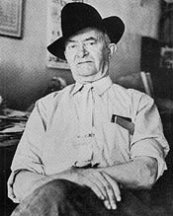
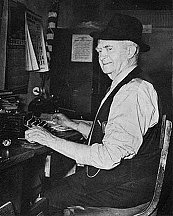 W.
(Bill) A. Chalfant, assumed the leadership of the newspapers
when his father was elected county assessor in 1887. W.A. Chalfant oversaw
the newspapers until 1942. W.A. (Bill) Chalfant began his newspaper career
at age 8 when he started the Juvenile Weekly printed on a small press given
him by his father. Only death - at age 75 brought his editing career to
an end. Young Chalfant grew up in a printshop, first at Virginia City's
famed Territorial Enterprise where his father worked and then in his beloved
Inyo County where he and his father founded the Inyo Register in 1885.
Chalfant took over the editor's chair in 1887 and soon had a lifetime battle
on his hands: to keep Los Angeles from turning the Owens Valley into a
desert by draining its water Chalfant and his paper fought valiantly -
both the marauders from Los Angeles headed by Chief Engineer William Mulholland
of the Los Angeles-Owens River Aqueduct and "traitors" within the area
who gave in to the city's pressure and sold out to Mulholland's agents.
Stories, editorials, cartoons - all filled the columns of the Register
as the fight continued, but a different kind of story, reports not about
the present and future but about the past - began to appear in 1904. Chalfant
had become concerned about preservation of Inyo County's history before
the 1870s when written records began to be kept, and he became the selfappointed
chronicler of the county's robust pioneer years, interviewing those who
had been part of its turbulent history and searching newspaper files, official
government reports, survey field notes, state legislative journals, county
government records, personal archives and books for confirmation and amplification
of those accounts. Chalfant's research was the basis of stories and columns
in his paper until the week of his death. They began appearing in book
form in 1921 with The Story of Inyo. The Story of Inyo was followed by
Outposts of Civilization in 1928; Death Valley, The Facts in 1930; Tales
of the Pioneers in 1942 and Gold, Guns and Ghosttowns in 1947. Chalfant
was a familiar and respected figure in Bishop, his paper admired for its
sound judgment and courageous opinions. A quiet, even reserved man, he
thought his job was to report public affairs, not participate in them.
He had firm opinions on many subjects, but those he expressed in editorial
columns, not in public forums. Even when he sold the paper in 1942, he
continued both on the masthead and in the editorial office. To honor him,
the new owners took the name of Chalfant Press for their three papers.
He remained editor emeritus of The Inyo Register until his death on Nov.
5, 1945. W.A. Chalfant remains one of the most beloved journalist figures
of the early 20th Century, having been fondly named the "Dean Of the California
Newspaper Editors." His book The Story of Inyo chronicles the history of
Inyo County from the original Piute inhibitants up through the 1920s. Its
authentic record of pioneering also includes Piute life, customs and legends
in addition to a brief gelogical record of the area. It is truely "a must"
for the student of California history. The Chalfants' name lives in other
monuments to their contribution to Inyo County. Chalfant Valley in the
shadow of the 13,000-foot White Mountain Range is famous for its Indian
petroglyphs.
W.
(Bill) A. Chalfant, assumed the leadership of the newspapers
when his father was elected county assessor in 1887. W.A. Chalfant oversaw
the newspapers until 1942. W.A. (Bill) Chalfant began his newspaper career
at age 8 when he started the Juvenile Weekly printed on a small press given
him by his father. Only death - at age 75 brought his editing career to
an end. Young Chalfant grew up in a printshop, first at Virginia City's
famed Territorial Enterprise where his father worked and then in his beloved
Inyo County where he and his father founded the Inyo Register in 1885.
Chalfant took over the editor's chair in 1887 and soon had a lifetime battle
on his hands: to keep Los Angeles from turning the Owens Valley into a
desert by draining its water Chalfant and his paper fought valiantly -
both the marauders from Los Angeles headed by Chief Engineer William Mulholland
of the Los Angeles-Owens River Aqueduct and "traitors" within the area
who gave in to the city's pressure and sold out to Mulholland's agents.
Stories, editorials, cartoons - all filled the columns of the Register
as the fight continued, but a different kind of story, reports not about
the present and future but about the past - began to appear in 1904. Chalfant
had become concerned about preservation of Inyo County's history before
the 1870s when written records began to be kept, and he became the selfappointed
chronicler of the county's robust pioneer years, interviewing those who
had been part of its turbulent history and searching newspaper files, official
government reports, survey field notes, state legislative journals, county
government records, personal archives and books for confirmation and amplification
of those accounts. Chalfant's research was the basis of stories and columns
in his paper until the week of his death. They began appearing in book
form in 1921 with The Story of Inyo. The Story of Inyo was followed by
Outposts of Civilization in 1928; Death Valley, The Facts in 1930; Tales
of the Pioneers in 1942 and Gold, Guns and Ghosttowns in 1947. Chalfant
was a familiar and respected figure in Bishop, his paper admired for its
sound judgment and courageous opinions. A quiet, even reserved man, he
thought his job was to report public affairs, not participate in them.
He had firm opinions on many subjects, but those he expressed in editorial
columns, not in public forums. Even when he sold the paper in 1942, he
continued both on the masthead and in the editorial office. To honor him,
the new owners took the name of Chalfant Press for their three papers.
He remained editor emeritus of The Inyo Register until his death on Nov.
5, 1945. W.A. Chalfant remains one of the most beloved journalist figures
of the early 20th Century, having been fondly named the "Dean Of the California
Newspaper Editors." His book The Story of Inyo chronicles the history of
Inyo County from the original Piute inhibitants up through the 1920s. Its
authentic record of pioneering also includes Piute life, customs and legends
in addition to a brief gelogical record of the area. It is truely "a must"
for the student of California history. The Chalfants' name lives in other
monuments to their contribution to Inyo County. Chalfant Valley in the
shadow of the 13,000-foot White Mountain Range is famous for its Indian
petroglyphs.
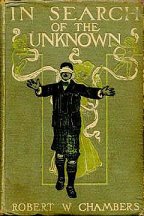
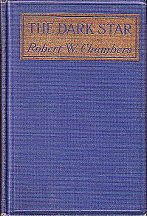
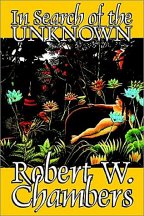
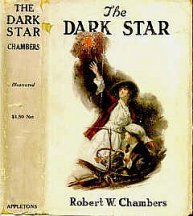
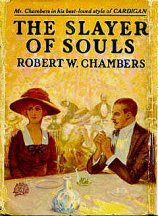
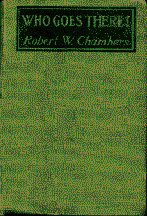
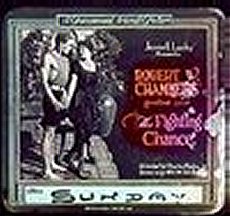
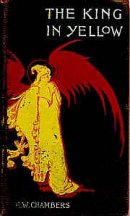
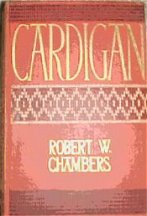
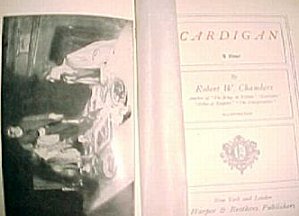
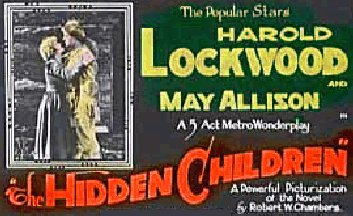
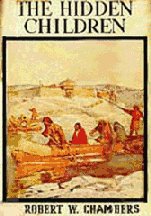
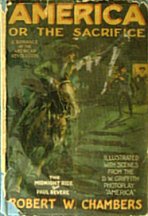
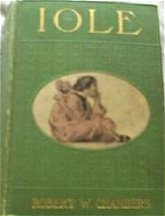
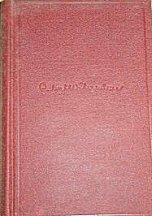
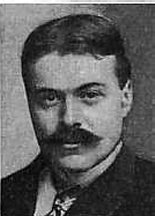
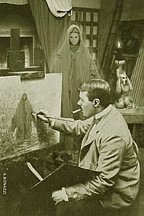
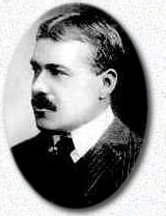
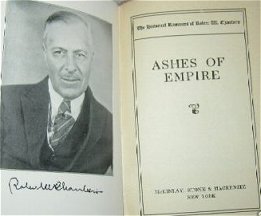
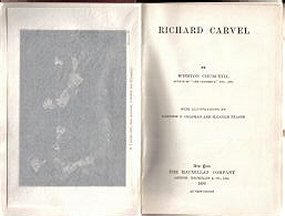
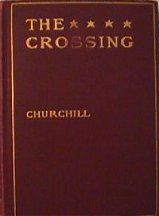
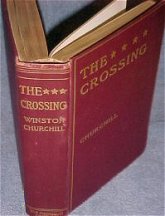
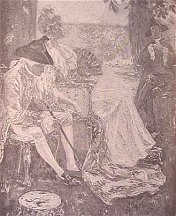
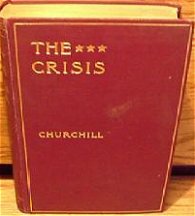
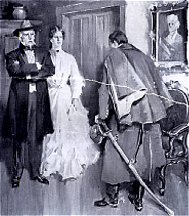
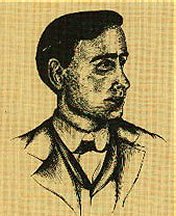
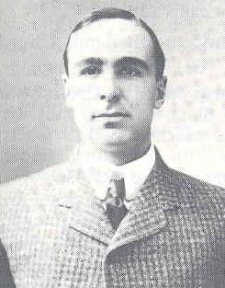 Educated at
Smith Academy and the U.S. Naval Academy at Annapolis, Churchill served
briefly as an editor of the Army and Navy Journal before becoming the managing
editor of Cosmopolitan magazine in 1895. In 1898, he published his first
novel, The Celebrity which met with a good deal of success. This was followed
in 1899 by Richard Carvell, an historical novel of Revolutionary Maryland,
which was immensely popular, selling nearly a million copies. In 1900,
Churchill was contacted by the English Winston Churchill, who promised
to use his middle name, Spencer, in his own writings in order to avoid
the confusion that was beginning to arise between the two. In 1901, the
two actually met in Boston. In 1901, he published The Crisis and became
one of the widest read authors in America. He moved to New Hampshire in
1899 and became involved in politics, running successfully for the New
Hampshire legislature in 1903. In 1911, he ran for Governor of New Hampshire
on Theodore Roosevelt's Progressive Party ticket but was defeated. When
Churchill began to shift his focus from historical novels to those with
social and religious elements, his popularity waned. Churchill published
his final novel, The Dwelling-Place of Light in 1917. After that he produced
a number of non-fiction works. His other works included The Crossing (1904),
Coniston (1906), Mr. Crewe's Career (1908), A Modern Chronicle (1910),
The Inside of the Cup (1913), A Far Country (1915), A Traveller in War-Time
(1918) and The Uncharted Way (1940).
Educated at
Smith Academy and the U.S. Naval Academy at Annapolis, Churchill served
briefly as an editor of the Army and Navy Journal before becoming the managing
editor of Cosmopolitan magazine in 1895. In 1898, he published his first
novel, The Celebrity which met with a good deal of success. This was followed
in 1899 by Richard Carvell, an historical novel of Revolutionary Maryland,
which was immensely popular, selling nearly a million copies. In 1900,
Churchill was contacted by the English Winston Churchill, who promised
to use his middle name, Spencer, in his own writings in order to avoid
the confusion that was beginning to arise between the two. In 1901, the
two actually met in Boston. In 1901, he published The Crisis and became
one of the widest read authors in America. He moved to New Hampshire in
1899 and became involved in politics, running successfully for the New
Hampshire legislature in 1903. In 1911, he ran for Governor of New Hampshire
on Theodore Roosevelt's Progressive Party ticket but was defeated. When
Churchill began to shift his focus from historical novels to those with
social and religious elements, his popularity waned. Churchill published
his final novel, The Dwelling-Place of Light in 1917. After that he produced
a number of non-fiction works. His other works included The Crossing (1904),
Coniston (1906), Mr. Crewe's Career (1908), A Modern Chronicle (1910),
The Inside of the Cup (1913), A Far Country (1915), A Traveller in War-Time
(1918) and The Uncharted Way (1940).
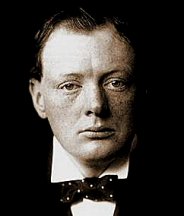
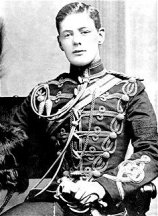
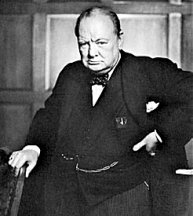
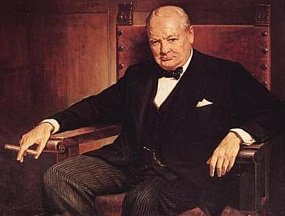
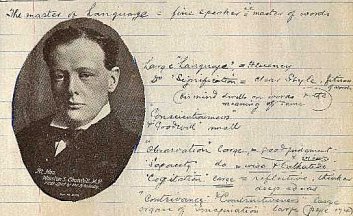
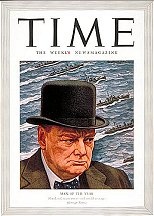
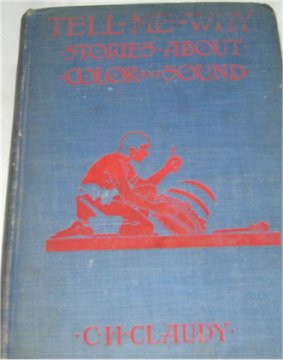
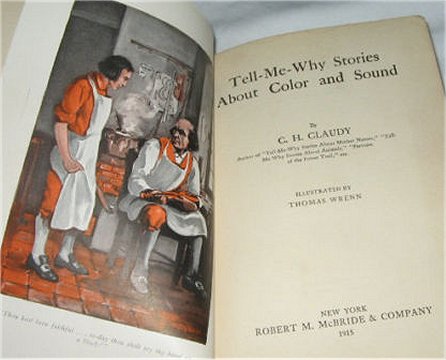
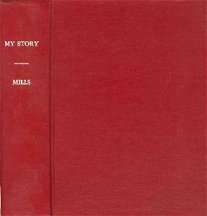
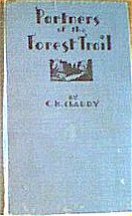
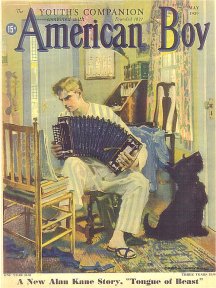
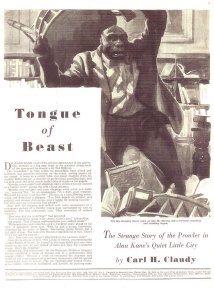
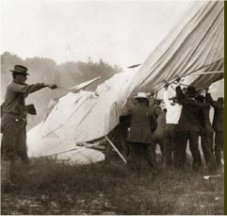
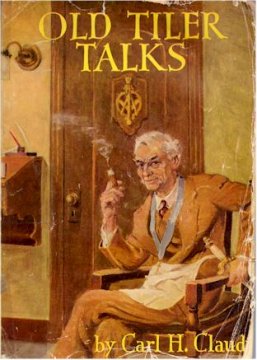
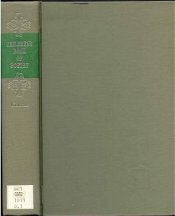
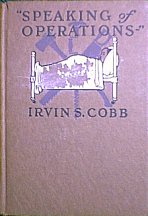
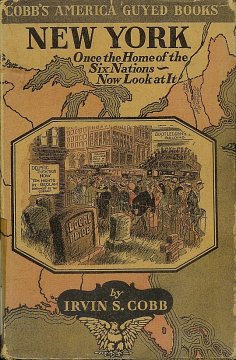
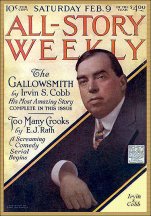
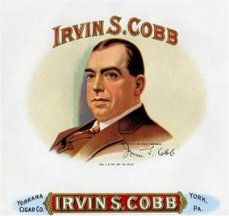
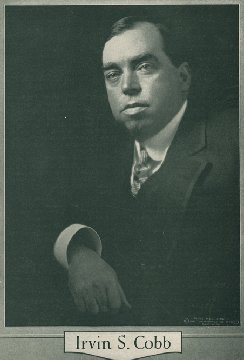
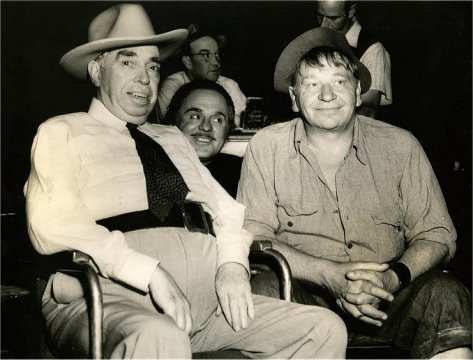
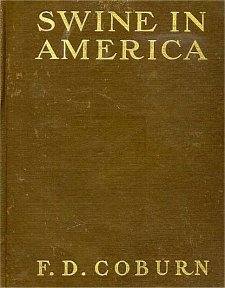
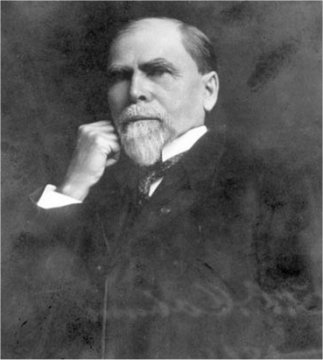 F D. COBURN
was born in Cold Spring township, Jefferson county, Wisconsin, May 7, 1846.
His father was Ephriam W. Coburn, and his mother Mary Jane Mulks. At eighteen
he was corporal in company F, one hundred and thirty-fifth regiment, Illinois
volunteer infantry, and promoted from private to sergeant-major of the
sixty-second regiment, Illinois volunteer infantry, veterans.
F D. COBURN
was born in Cold Spring township, Jefferson county, Wisconsin, May 7, 1846.
His father was Ephriam W. Coburn, and his mother Mary Jane Mulks. At eighteen
he was corporal in company F, one hundred and thirty-fifth regiment, Illinois
volunteer infantry, and promoted from private to sergeant-major of the
sixty-second regiment, Illinois volunteer infantry, veterans.








